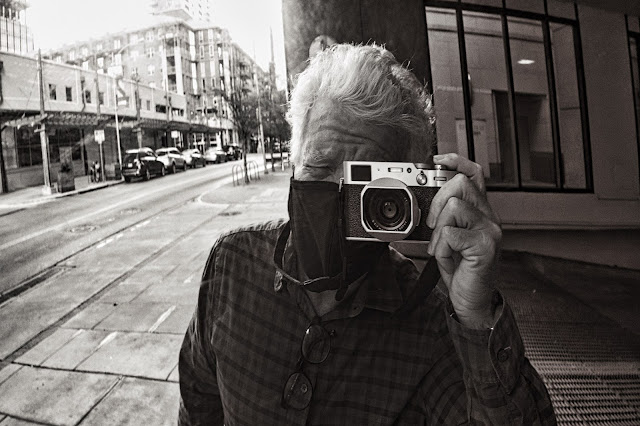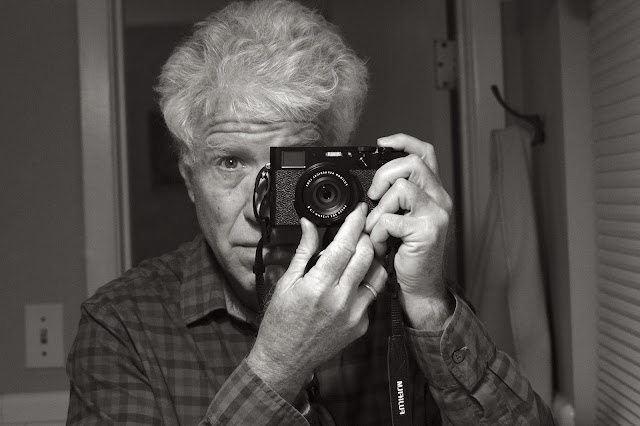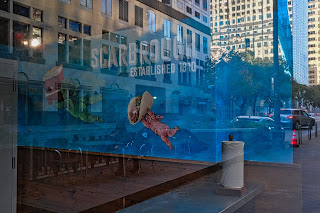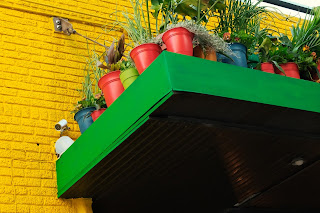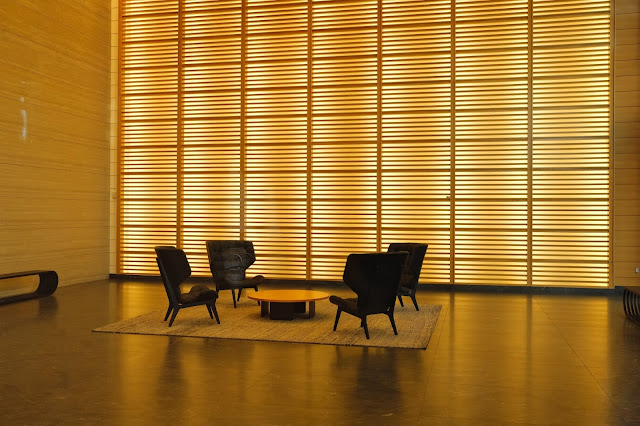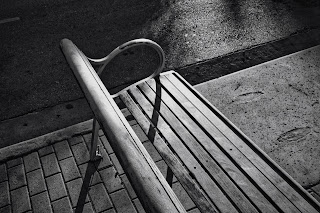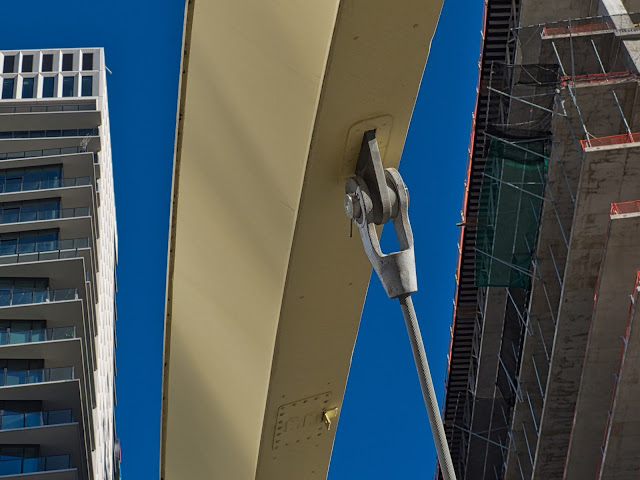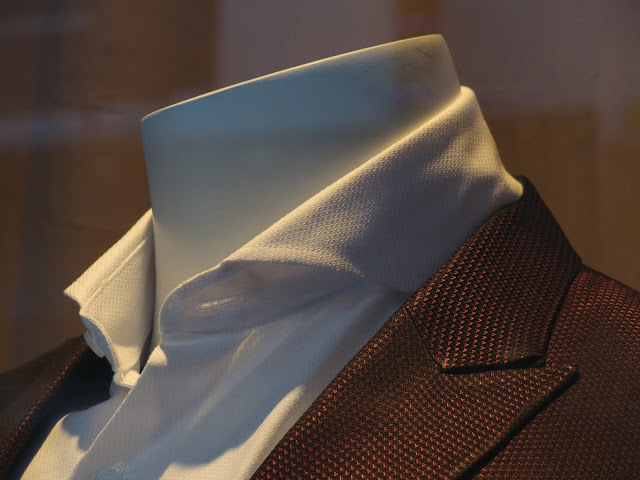Ah. Where to start? We came into the year with a certain amount of promise. The stock market was rising and the jobless rate was low. It seemed that photography and most of the arts associated with advertising and marketing had finally recovered from the last recession and people were once again able to spend and save instead of having to choose one or the other. And then? BAM. Total shutdown.
We were working on photographs and videos for two very good productions at Zach Theatre. I think that a day or two after the final edit of "Somebody Loves you Mr. Hatch" the show was cancelled because of the pandemic. Followed the next day by Zach's production of, "Every Brilliant Thing." The lockdown hit suddenly just on the 13th of March and all at once we had to consider things like: at total absence of toilet paper, Chlorox Wipes, paper towels and most pastas, rice and beans at our local supermarkets. We rushed to source face masks. And we sat next to our computers as client after client got in touch to tell us what we had already surmised; that X project would not be going forward. A week later the stock market went into free fall and family members and friends texted to ask, in a panic, if they should sell off all their stocks.
One of the biggest disappointments for me was the closure of all the pools in Austin. No swimming for the next couple of months. I'm still wondering how I was able to survive...
The saddest day of 2020 was the day my dear Studio Dog passed away. I may not ever recover fully from that... sigh.
Slowly we started coming to grips with the new rhythm of life. Mask up to go to the grocery store. Mask up to go for a walk anywhere there might be other people. Stock up on toilet paper. Order face mask in one hundred count boxes from Amazon.com. Learn to walk in the neighborhood without my dog.
These are common stories or personal stories so I guess we should cut to the chase and talk about the impact of 2020 on photography and related industries.
Most commercial photography ground to a halt for months until, at least, people developed some protocols to deal with the potential risks. Face masks on all shoots were a given. As was having gallons and gallons of hand sanitizer on tap. I did a few projects taking portraits of people, individually, in the studio but all of them were done as safely as we could make them. Nearly all the subjects were medical doctors from the non-emergency practices we have had as clients for decades. Most came to the studio having been very recently tested. I cleaned all contact surfaces after each appointment and I worked to make the actual in-person time as short as possible. It was appreciated.
But this was a year for learning new things. I volunteered to do a giant project for Zach Theatre which was 100% video, and my theater counterpart and I agreed that large parts of the content we were making would benefit from footage that could only be effectively generated using a gimbal-mounted camera. I watched every video I could on the subject, bought a phone gimbal to practice with, and then bought a Zhiyun Crane V2 to do the actual project.
Mastering a moving frame is a big learning experience for someone who comes from a background where we make every effort NOT to move a camera. I spent a week before our big, giant cast, kick-off day just learning how to walk with a gimbal, walk backwards with a gimbal and how to make moves that worked well with the constraints of a gimbal.
My favorite camera, at the time, to use with a gimbal was the Panasonic G9 along with the 12-60mm zoom lens. The main reasons being that at the time of the project the G9 had the best AF of all the Panasonic cameras and was the lightest one that could do 4K, with 10 bit, 4:2:2 color in camera. It was my relative success with this camera on a gimbal that eventually persuaded me to get a GH5. It has the same basic weight and size as the G9 but offers some improved codecs. Most valuable to me is the All-I codec which seems to handle motion best. A very important consideration for a camera moving via gimbal while tracking along with subjects who are also moving.
We did a lot of work with the gimbal in a short amount of time and it's that compressed learning that I think yields the best results. At any rate, without a client needing a "virtual" gala for fund-raising I might never have ended up buying a gimbal and learning, in depth, how to get good stuff from it. So I guess that's one silver lining presented by the adversity of 2020. I should do a behind-the-scenes video called, "Mastering a Gimbal in Ten Full Days of Trying." But maybe not...
Now I also seem to have attracted a Ronin S gimbal and a newer Zhiyun Weebill S gimbal. Inventory juggling might be called for shortly.
We didn't stop with the generation of lots of performance content for the theatre's gala live-streaming event. I also provided the cameras and camera work for the event itself. A three camera show, switched live, over the course of three hours. I switched from using cameras based on their nimble-ness to cameras that matched up well and had long run times. At the time my main camera was the S1H and the second string cameras were the S1R and S1. Normally, I would not have considered the S1R for a production like this since its run time in 4K was limited to 15 minutes. But the editors handling the live switching and uplinks only needed 1080p footage and all three of the cameras could do that for as long as the batteries and memory cards held out.
All three cameras were linked to the main switcher via HDMI cables and we rolled live with them for 1.5 hours of actual performers working live. I'm a nervous Nelly on jobs that can't be re-done so each camera had a back-up power solution. The S1 and S1R both had Anker power banks feeding into the USB ports on the cameras. The S1H had the battery grip attached and an extra battery installed. We used the camera mics for scratch audio in case we wanted to edit stuff down the road but the actual audio was from lavaliere microphones run into the digital recorder at the switcher.
My digital video education continued with a series of live shows on Zach Threatre's open air plaza. At first we used a two camera set up to record live concerts for 1.25 hours. Both cameras were set to record at 4K, at 30 fps. One was set up a fair distance back from the stage to keep from blocking any audience member from seeing the stage. That camera presented new learning experiences for me as I grappled with the need for very long lenses. I needed to be able to go in tight with this camera since it was the only one that would be manned by an operator. And that operator was me. I started out with the 70-200mm on the S1H but I needed more reach. I switched from full frame to the APS-C crop and it worked well enough but I still wanted more reach. Also, I had a hell of a time maintaining good, manual focus. I had to work with an external monitor so I could magnify the frame while rolling to constantly check and tweak the focus. The problem with the set up was that every time I touched the focusing ring on the lens you could see camera movement/vibration.
The next time out I tried using a longer lens on a smaller sensor camera, the 50-200mm on the GH5. It worked well but the files were noisier than those from the full frame, state of the art, S1H. But the extra, equivalent 100mm was nice to have!
I finally landed on a good solution by using the same long lens on a GH5S which is much better at handling lower light with less noise (dual ISO). The other big difference between the GH5 and the GH5S is that the GH5S lacks image stabilization. It's not a problem when you are using a big, fluid head tripod. And yes, I bought the GH5S just to use in situations like this. But I was still trying to focus manually.
More research, and trial and error, and I finally narrowed in on a focus routine that consisted of setting up the touch screen for focus and touching the area with the face in it that I wanted in good focus. Damn if it didn't work! Once I got this figured out and could also see confirmation on an external monitor I pretty much learned how to do image magnification camera work acceptably well.
At the same time the editor and I both realized how great it was to have multiple angles to cut to during the performances. There were no costume changes, no props, no fancy lighting and no great decor at these concerts so the performers were all we really had to work with, visually. Seeing them from only two angles was limiting. After the first week I incorporated a third camera so we could have a wide shot of each stage as well as a follow camera (the one way back from the stage) to follow the performer and get close ups.
By the final week of my involvement we were four cameras deep. One follow camera on a big, fluid head tripod, also equipped with an external monitor, as well as three other cameras mounted on smaller tripods or table top tripods, pre-focused and taped down in place.
Just before the recording of the shows started (with full audiences!!!) I'd walk around from the furthest camera to the closest one turning each one on, confirming that they were manually focused on the right spots, and that the WB and other settings were as we wanted them. I'd make it back to the main camera just as an announcer wrapped up the lead-in (which I labelled: Here's the part where we beg for money) and I'd slip on my headphones and get the final camera rolling.
I learned a lot about camera positioning and how much better it would be if we could do the tapings without audiences so we could put the cameras anywhere we liked them. Or even use a gimbal mounted camera! If I do something like this again I'll try to push for additional camera operators who could zoom in and out and change compositions from their positions based on what they see happening on stage. The final touch would be to put everyone on a communication system and to also feed the view from all their cameras to a single show director who could call out camera moves or say which performer to highlight/focus on in the moment. But some of this is pie in the sky when you consider that our prime motivation was desperate money raising.
Just as we got the system totally figured out Austin's Covid numbers rose to a new, high level which triggered a stricter shut down and we shelved the outdoor concerts entirely. It was an expensive building project for me. I started with my base cameras and added both a GH5 and a GH5S specifically to meet the challenges (as I saw them) of this project. I also bought the Panasonic/Leica 50-200mm lens to use as the follow lens for the GH5S which was another $1,600.
So, even though most of my projects in 2020 ended up being charity donations I still spent like a drunken sailor on gear. In fact, by the time we ended the live concerts I had already acquired three different gimbals in 2020; besides the one for the phone.
I was happy to see a number of new, and very good, cameras hit the market this year. Not just the ones I would buy for my use but also models that various friends have quickly come to love.
I picked up an S1H and I like using it for video. In fact, since all the firmware upgrades for the S1 cameras have been installed, tweaked and re-installed, I love all three S camera models more than ever. I've toyed with buying the new S5, which seems like a great, all around camera but I think my current S inventory covers me pretty well right now. Especially as client work is currently in limbo.
I bought two new lenses for the S system this year. In February I bought (on a misguided whim) the Lumix S-Pro 24-70mm f2.8. It's a wonderfully sharp and capable lens and it's "Leica Certified" but I really didn't need it since I already had the 24-105mm f4.0 lens and find the cheaper zoom to be great. Both lenses came in handy (and presented a bit of overkill) when I used them on remote cameras for the video work
The second lens is one I picked up earlier this week but have not tested yet. It's the Lumix 20-60mm lens that Panasonic is pairing with their new, S5 body, as a kind of "kit" lens. Andrew Wong highly recommends it and I'll know on the next sunny day how I feel about it. Why buy it? Some one parted it out of a kit. In the first flurry of S5s to hit our market they could only be purchased with the kit lens. I was able to buy a basically new lens for a song since the original owner pulled the camera out of the box and handed his ready salesperson the lens to sell off for him.
For me it makes a lot of sense. I'm not much of a wide angle fan but sometimes I need to go as wide as 20mm to get everything in that a client wants in a shot. I'd bought the 20mm f1.4 Sigma Art last fall but it was big, heavy and unwieldy. And, as an architectural photographer friend commented, "Who ever needs to shoot wide angle lenses at f1.4? Doesn't make sense." The 20-60mm, if it's sharp enough at 20mm, will fill the bill nicely and save me some weight in the camera bag. Bonus, the 20-60mm is weather sealed.
I didn't buy the S5 and was quickly (effortlessly?) able to rationalize that the money I saved by not endlessly duplicating the camera capabilities in the Panasonic S line could reasonably be put to good use buying a camera that everyone, EVERYONE! more or less demanded I try. That would be the Fuji X-100V. So, when I saw a barely used (500 actuations?) chrome version on my local dealer's website I meandered up to the store, haggled a bit (just for fun) and bought it. Turns out it's much, much better than the Fuji X-100T I actually did purchase three or four years ago, and it's infinitely improved over the very original X-100 I played with at the line's inception. It's so good that I can now say that I am happy to tolerate a fixed 35mm lens.
The X-100V is a camera that launched this year and its sensor is great. How much do I like it? Well, I may still be in the "infatuation" phase but after shooting it for less than a week I went back and paid full price for a brand new black one as well.
But in reviewing the gear that hit the market this year I feel like I would be remiss if I didn't mention a camera from a different brand that is equally impressive. It's the Sony A7Siii. Yes, it's a video centric camera but I long since decided that we're all heading towards producing web content almost exclusively and 12 megapixels just isn't a roadblock anymore. We've given up the pretense that all cameras have to be able to push out enough megapixels to make 40 by 60 inch wall prints. Do people even put prints up anymore?
Sony has made so many improvements over their previous A7mk2 that it's a totally different camera. An amazingly high resolution EVF, a much more robust battery, faster processing, higher data rate codecs, the ability to deliver (ostensibly...) 16 bit raw video files via an Atomos Ninja V or Shogun and a full complement of tools to make the camera faster and easier to use. Add the audio adapter to the hot shoe and you have a camera that is adaptable to just about any video or cinematic project. Even the memory card implementation is super; you can use either SD or CFE cards in either of the two slots. Vrooom!
If I were still using Sony cameras I'd have this camera on my most immediate list. But, of course that presupposes that we have some clients around to do some work with. Or actors we can make movies of without masks. Still, if you have the need for video and desire stuff like 120 fps 4K and a superior EVF experience (and a lot more) this camera is a stone cold bargain at $3500. It even looks nicer than any previous A7 series camera.
My sometimes video collaborator and full time friend, James, picked up the A7Siii early on and he was clearly impressed with the color and noise rendering performance on a recent video project for a large software company. Basically, if you set the exposure correctly and do a simple white balance you'll be through with post processing at record speed. If you use S-Log and the Sony supplied LUT in post you can pretty much deliver SOOC. That's big when it comes to video.
On a non-video front I've played around with a Nikon Z7mk2 and it's really a great stills camera. It may also be a highly competent video machine but I just had time to play with it in its photography capacity. The AF is extremely fast and sure. The 24-70mm f4.0 is very sharp and the overall handling of the camera is great. The camera uses two of their fast processors, has dual card slots (although one is SD and the other is CF Express B), can be powered by USB and the video specs look good.
But for me the very nicest thing about the new camera, besides its much improved speed, is the handling and the hand feel. It just feels comfortable and familiar even though the body style is very different from generations of DSLRs. This is a camera that begs to tag along for a full day of shooting. Even more so when paired with the new zoom lens. Which is phenomenally good. Worthy of that big sensor. Nikon is not side-lined yet. And if the markets recover we may see a bump in many camera maker's bottom lines in the year to come. I'm not going to jinx it by saying "it can't get any worse..."
Wrap up. I've learned how to spend quiet time alone this year. How to dig into books I should have read decades ago but put off while I dragged cameras hither and yon. I've learned a tremendous amount about using digital video cameras. And new-fangled accessories. On the shooting end it's so different from the film and tape motion picture cameras I worked with in decades past. I've learned how to actually stop working and not worry. I've learned that all the new shoes I bought in 2019 probably won't get worn much until the end of next year. Not much call for suits and ties right now either.
I've learned to enjoy eating at home and can actually cook a few more dishes than were in my repertoire just last year. And I've learned to just dive in and do the dishes without having to be asked.
I think I'm also learning to use my intuition better; I've dodged some dodgy jobs and weird situations just by paying attention to how I really feel about stuff and it's actually a profitable way to go through life. You just have to slow down enough to listen to some inner voice.
I'm waiting (im) patiently for my final delivery of the year. Will the lens hood I ordered for the black X-100V finally make it from Amazon's Carrier Facility here in Austin where it has been languishing since 8:45 a.m. today? Or will it be a tardy treat for 2021? I guess only this inquiring mind wants to know...
Thanks for reading this year. I hope you'll tune in for 2021. Maybe it will all be unicorns and rainbows, and all the markets, including photography, will recover and blossom. I'll be happy to write those stories.
A bit less dark drama would be nice.


